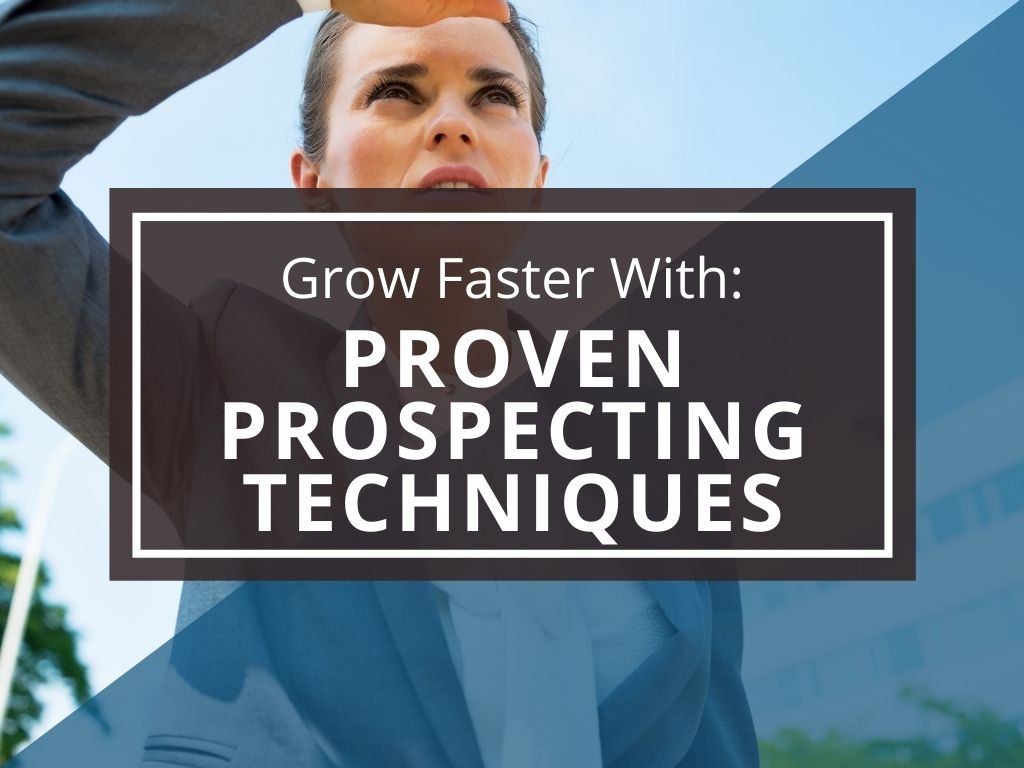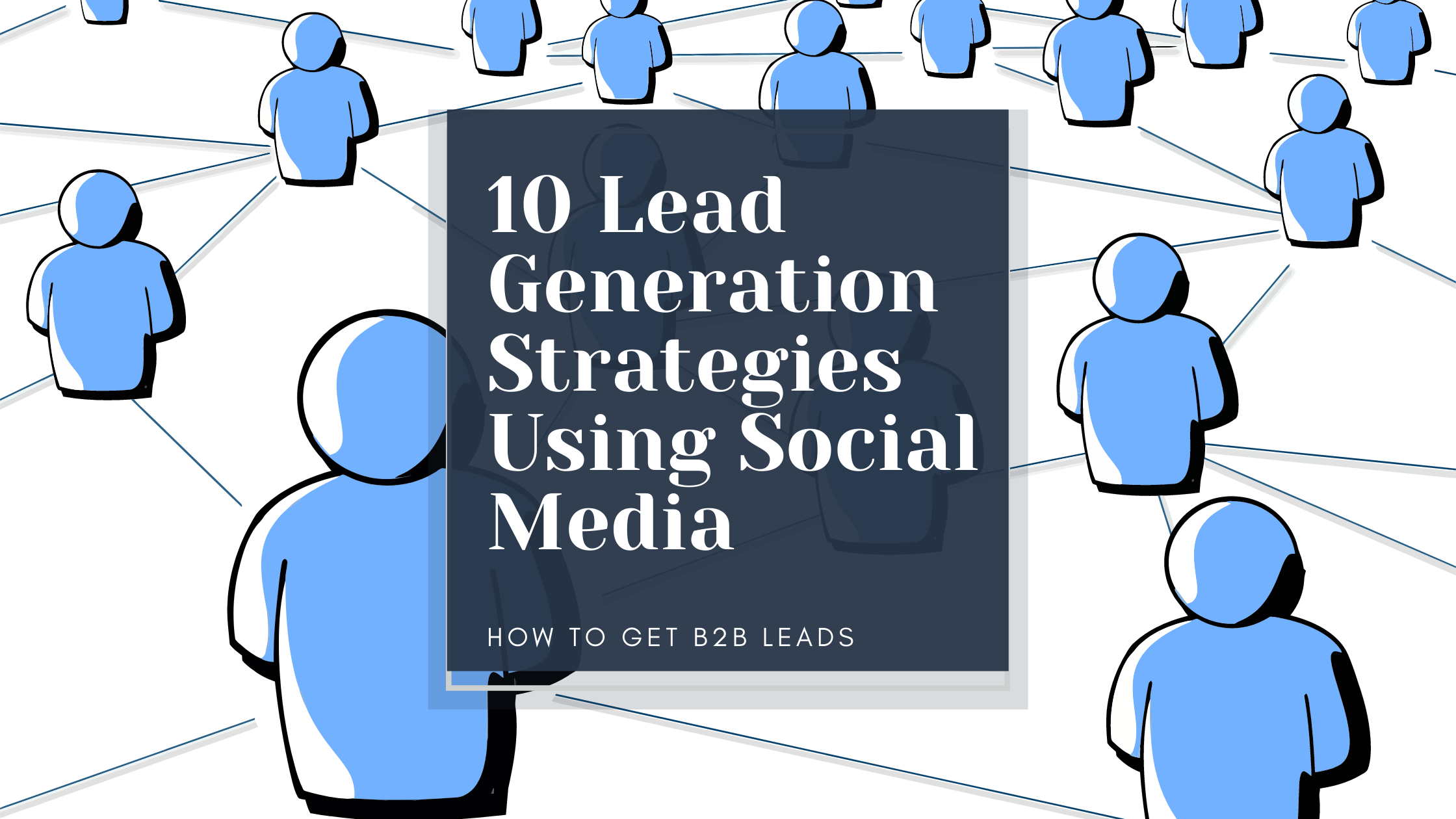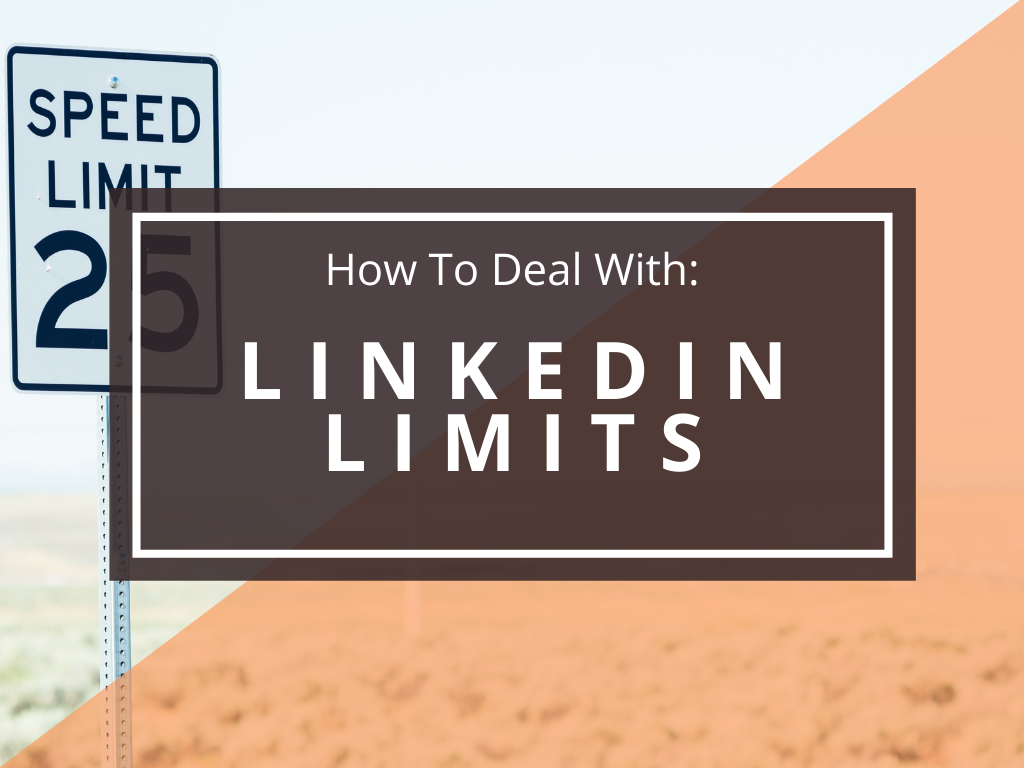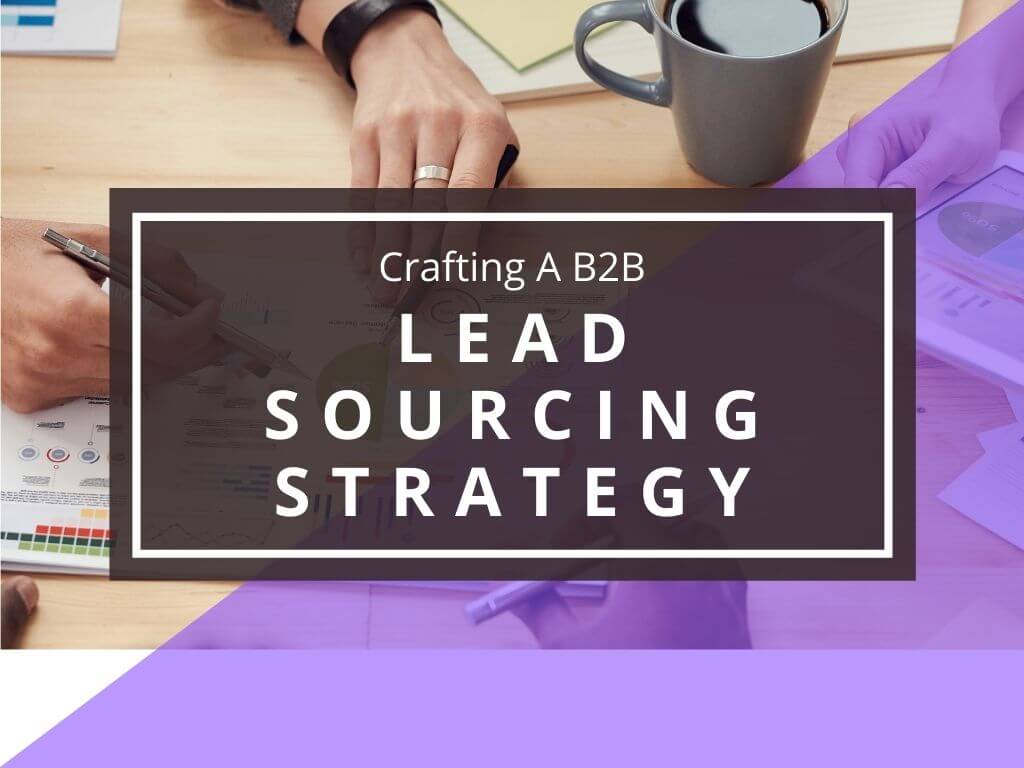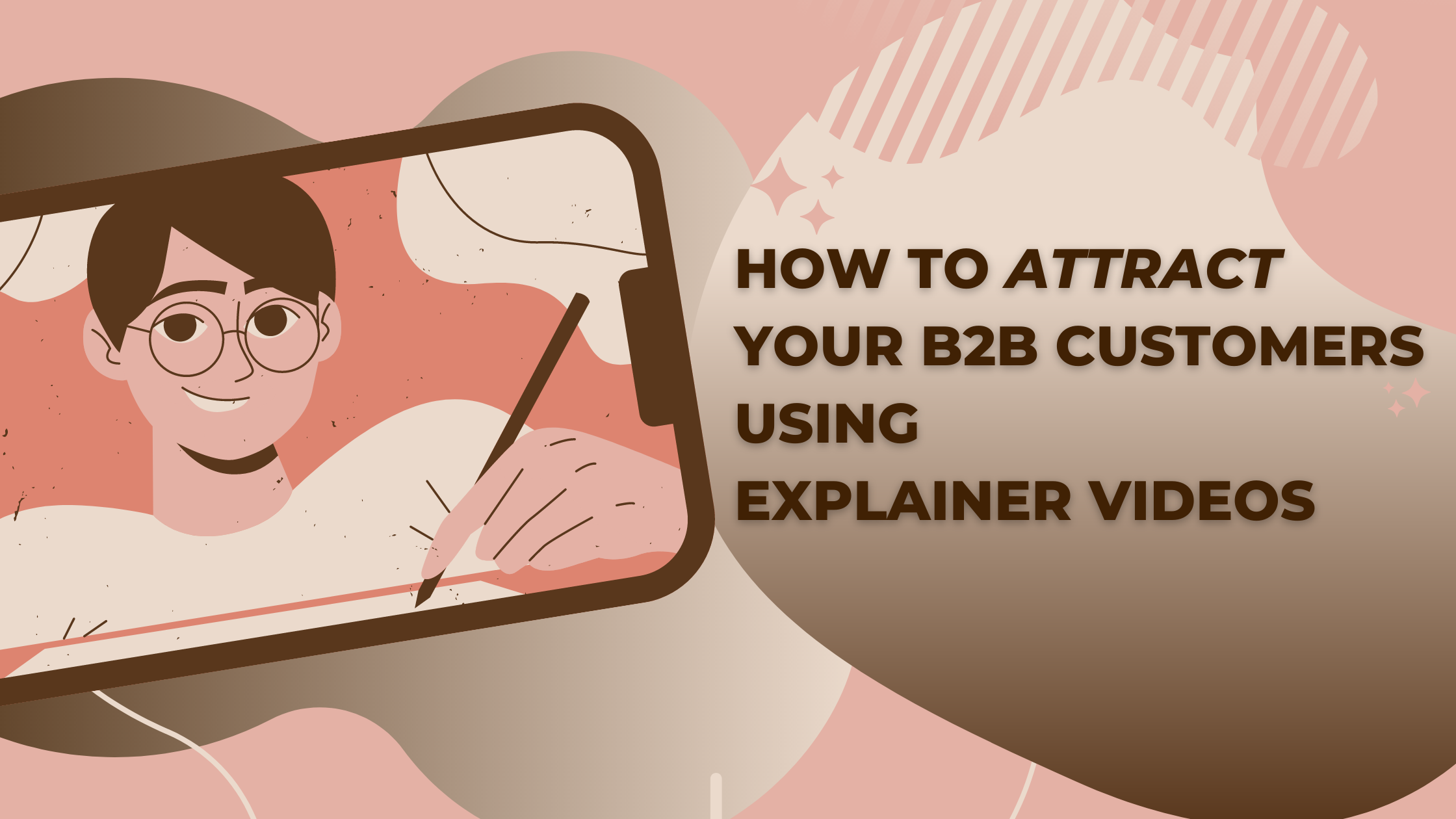The year is 2021… Sales prospecting is a thing of the past.
I pause *dramatically*
I’m just kidding (obviously).
Appointments don’t just fall into your lap – if they do, can you tell me what you do to get them?
Prospecting is an essential part of your sales process.
If you don’t have it, you’re stuck waiting.
It’s just dumb luck, not a strategy.
That’s why I took these 10 sales prospecting tips from the best of the best.
No matter what pipeline-building technique you master, you’ll close the quarter on the right side of the quota (and end the month with more meetings booked).
Prospecting Technique #1: Use This Cold Call Opening
Are you looking to level up your sales prospecting?
This is how to start a cold call:
Hey, how’ve you been?
So here’s how it works:
“Hi Jane, this is Travis Ross from Brightest Minds. How’ve you been?”
So, before you get stuck on the idea that this won’t work, look at the data…
“How’ve you been?” performs 6.6X higher than cold calls without it.
We’re not talking about prospects you’ve already talked to. We only tested sales calls that were first interactions.
What makes this technique so effective?
I’ll give you two words: Pattern. Interrupt.
You can use a pattern interrupt to “scramble” your prospect’s brain. Something totally different from the typical “have I caught you at the right time?” they usually get from cold callers.
Try it out for yourself. Yes, it may feel a little awkward at first. Wait until you see the results.
Technique #2: Use your full name and company name
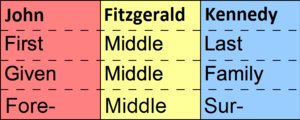
What’s the first thing a prospect asks when you forget to say your name and company? You don’t have to sign up (hint: it’s not “where do I sign up?!”)
“Who is this?” or “What company do you work for?”
This puts you on the defensive right at the beginning of your sales call. You know, the part of your sales funnel where you’re trying to build trust and goodwill.
That’s not a good start.
Instead, do this:
“Hi Jane, this is Travis from Brightest Minds.”
That’s so much better. Why?
There are two reasons this tip works…
First of all, people who introduce themselves with their full name get respect. They’re really important. Which do you respect more, Travis or Travis Ross from Brightest Minds? (I won’t be offended).
The person who asks the questions controls the conversation. You control the conversation when you say your name and your company’s name upfront because the next question comes from you. There’s no “who is this?“
Prospecting Technique #3: Don’t Make This Prospecting Mistake
“Did I catch you at the wrong time?” at the start of a sales call.
Like: “Hi Tom.”. I’m Karen Cold Caller from Spammy.com. Did I catch you at the wrong time?”
Oh shudder.
Yeah, we know.
Many sales prospecting experts push for this (good ones too!). It’s because people like to feel in control, so they say “no”. If I ask you, “Did I catch you at a bad time?” They don’t want to say yes.
It’s all gravy from there, right?
Theoretically, yeah.
But our numbers say otherwise. Cold calling with “Did I catch you at the wrong time?” It makes you 40% less likely to book a meeting.
The success rate for cold calls that opened with this number was 0.9%:
Exactly why? It’s what everyone else does. It’s quite common. It sounds like you’re a typical salesperson.
So typical sales reps get treated like… typical sales reps, right?
Prospecting Technique #4: State Your Reason for Calling
Let’s review.
Your sales pipeline strategy thus far seems to be on track. As you opened with your full name and company name, you asked, “How have you been?”.You have not asked if you caught them at a bad time.
It’s time to explain why you’re calling. Why?
Put yourself in the buyer’s shoes. They’ll be wondering why you’re calling as soon as they answer the phone.
Everyone wants a reason. We’re curious why things are the way they are. It’s always weird to get an unexpected call.
According to our research, sales reps who state why they’re calling have a 2.1X higher success rate.
Let your buyers know why they should buy from you.
“Hi Tanya, this is Travis Ross with Brightest Minds. How’ve you been?”
(Tanya answers).
“Tanya, I’m calling because…” and then her us why.
Right upfront. There is no awkwardness. Meetings abound.
Prospecting Technique #5: Keep ‘Em on the Line
Here’s the hard truth about sales prospecting:
You have five seconds to earn five minutes when your buyer answers the phone.
A successful cold call lasts almost twice as long as an unsuccessful one.
Buying time is the first rule. Prospecting isn’t just about getting the buyer’s attention. You gotta hold on to it.
You’re more likely to get the meeting if you talk longer.
This isn’t the first time you’ve had this conversation.
Conversation “paths” can be predicted, and you can navigate each of them accordingly.
You’ll be able to plan every move ahead.
Every statement you make should entice the buyer to pay attention to your next one.
So you’ve got to nail your technique. The words you choose need to be economical and compelling. Eliminate every unnecessary word from your sales script.
We recommend getting rid of anything that doesn’t add value to the discussion.
Selling The Meeting: Prospecting Technique #6
Remember the “listen twice as much as you talk” rule?
Okay, well that’s not applicable to sales prospecting.
Successful cold calls have a higher talk-to-listen ratio than unsuccessful ones.
It’s not about discovery with cold outreach. It’s not about asking what their top priorities are.
You’ve got to convince your buyers to come to the meeting. Then you can find out their top priorities and all that other stuff!
Just think about it for a second. Have you ever asked, “What are your top priorities?”?” when you’re cold calling? Your prospect replied, “Wow, I’m glad you asked me!””?
Nope, we didn’t think so.
An excellent sales technique, but poor timing.
Don’t do too much discovery early on, and instead, sell the meeting.
Prospecting Technique #7: Ask This Question
Every cold call you make, you should ask one question. How can you close the deal (that’s the goal of sales prospecting, right?)?
With your carefully crafted, relevant questions, you have captured your buyer’s interest. This meeting is yours. Taking the next step is on their mind.
Now you just need to get that commitment for the meeting with “Do you have your calendar handy?”
Please don’t say “I’ll email you a link,” or “let me know when you’re available.”
Not at all. Ask them to bring up their calendar, and schedule the meeting right away.
We’ve never seen a better cold-calling closing technique.
Prospecting Technique #8: Book meetings with this prospecting email
Sales prospecting emails are hard to write.
You’ve got to craft the perfect subject line. Personalize it and make it relevant. You’ve got to have a killer call to action.
All these things are challenging enough on their own. Let alone stringing them all together at once?!
We’ve got to make every part of our prospecting email count. And a CTA that’s well done can turn a cold prospect into a warm (or even hot) lead.
Exactly how? By asking to gauge interest, not setting an appointment time. It’s good to ask “Are you interested in learning more about X?”
Huh? Wasn’t tip #6 about focusing your sales prospecting efforts on securing meetings? Yes. Yes it was.
But this isn’t about what to do while on a call. This is about crafting an amazing sales email.
It may seem like they’re the same thing. But they’re not.
Our team of data scientists analyzed 304,174 emails to identify which CTA led to the fastest meeting booking. Here’s what they discovered.
The highest-performing call to action for cold emails is interest CTA.
The goal of an email is to sell the conversation, not just set an appointment. Think about it. The primary challenge of courting the business decision-makers you’re reaching out to is that their time is scarce.
Out of the scarce hours in their day, you’re asking this person to give up some of their precious time. How about no. Delete.
I often hear sales professionals asking our prospects what their interests are. Asking for interest is different than time, as it’s a non-scarce resource.
That is the reason why using an interest-based CTA to pique a buyer’s curiosity tends to work better than asking for time. There are usually many prospects with similar interests, which means your information will be more relevant.
Prospecting Technique #9: Avoid Using This in Your Outreach Emails
How about the promise of a solid return on investment?
For example, “increase revenue by 33%.”
It seems like prospects would be impressed with these stats, wouldn’t they? Sometimes it seems like all prospects want are solid numbers. ROI language doesn’t have the same pull in sales outreach as hard dollar figures.
The Brightest Minds analyzed 132,552 cold emails to uncover which words work best for sales pushes.
Our research shows that cold emailing to potential clients without using ROI language increases success rates by 15%.
It may seem counterintuitive, but our experience shows that prospects can be less responsive to ROI data.
Even if prospects are convinced by your statistics (which is a big ask), they may not find them compelling enough to book an appointment with you.
That’s because ROI stats are divorced from the tangible problems a prospect cares about. They lack any context, and your prospects want to see the context to show that you fully understand their situation.
Sellers should always start by presenting the emotional reason to buy. The rationale for this is that if they can make a prospect feel good about what they’re investing in, it will be easier to get them excited about other aspects of the purchase decision.
Starting with ROI skips over the critical emotional development part.
It is best not to include ROI claims in cold emails.
Prospecting Technique #10: Research Your Prospects
Now that there are so many sales prospecting tools available for B2B sales reps, there is no excuse not to go in prepared on cold calls.
One way to set yourself apart is by doing the homework and being knowledgeable before you can anticipate roadblocks.
LinkedIn is a great tool for sales prospects who are targeting b2b companies.
Sales professionals need accurate and accessible B2B data to identify, engage, and close prospects. An email finder tool like ContactOut provides this data in an easy-to-use platform.
With accurate contact information for millions of businesses, sales professionals can easily find the prospects they are looking for. This data is also updated in real-time, so sales professionals can be confident that they are always working with the most current information.
Finally, the platform offers integrations with many popular CRMs, making it easy to keep all prospect information in one place.
With a few clicks, you can find information about the company’s management team, size of workforce per department, and rates of growth.
Here at Brightest Minds, we need to know whether or not a prospect company is growing quickly.
That means they probably have an onboarding challenge which as you can imagine if compelling given Gong’s sales-driven services and potential solutions.
Your potential prospects’ online activity may give you clues about the type of things they care about.
You can find out what they are talking about and see their posts or comments to tailor your sales message.
You can also find commonalities in what your potential customers post online, and use those areas of agreement to ground your outreach message with them.
If you want to be successful at get a meeting with more people in your target market, then it’s important that you are able to speak directly about their pain points. Know what they’re struggling with before you pitch them.
Researching And Prospecting For Potential Customers
Prospecting is the procedure of finding territory where one can sell their offer.
The first thing to be done in this process is to find information and contact details about decision-makers.
From these contacts, a list of potential customers will be drawn up. Lists for plucking may also need to be purchased from companies specialized in selling them – or alternatively created by other members in the organization who may have had dealings with previous businesses.
In outbound prospecting, the responsibility of generating lists and qualifying leads typically relies on human effort.
However as research starts from scratch, it requires more intelligence and time. Depending on the market and profile of decision-makers, access to information is more difficult and contacts are not available online–this is the case in the agribusiness sector for example.
These factors make this operation expensive and make growth in scale challenging –as accessibility increases with pre-sales team staff size.
How To Prospect For Profitable Customers Effectively: A List Of Actions You Can Take
Prospecting activities can be broken down into two stages: preparation and connection.
The first stage is to identify opportunities and gather information and form a mutual connection. The objective then becomes reaching out prospectively by connecting with them through multiple means (social, email or telephone) using strategies like a pre-call to secure the opportunity for a future call where you have the ability to build rapport before beginning your interrogation style sales pitch.
There is no one correct way to perform these activities, but there are a few methods that can help improve your prospecting success and increase appointment bookings for your business.
Although it varies significantly from business to business, we’ve put together a prospecting process that typically works well for many companies.
Prospecting activities often contain research elements before approaches are taken with leads.
One such element is investigating the potential customer and their businesses to find common ground, a relevant referral or other connections in our business lives.
As a result, marketers should take care to show that they are interested in the prospect and have put in the effort to research any information about how their product or service fits with those of the prospect.
There are identifiable patterns for the initial contact during a sales call.
Make a list of questions you need to ask in order to make an informed approach and leverage that knowledge when talking on the phone or in person.
Person: Use LinkedIn or Facebook to find out the person’s city of residence, where they have studied and worked, projects they have participated in, their interests and subjects they usually share.
This information helps show sympathy and start a conversation.
For example, note how old the prospect is as well as their appearance so that you can speak using language that will resonate with them.
Company: The more you learn about a company, the easier it will be to find out what they really need.
Have you participated in any events lately? Won any awards or launched new products?
Hired any recent graduates or staff members? Expanded your operations this year?
Sector: understand the competitive scenario, what its competitors are doing, what are the differentials, if the sector has any relevant events in the coming months.
It is necessary information to carry out a consultative analysis and demonstrate authority – which is valid for all phases of the sale.
Content: checking what materials they have downloaded is a great way to start the conversation.
These interactions give you a clue about their problem and it’s best to prepare for that specific topic ahead of time.
One approach we like to use is: “I saw that you downloaded our Prospecting Worksheet, what kind of challenges do you face in this regard?”
Researching prospects in advance leads to better sales. Of course, you have to plan your time.
While it may make sense to dedicate hours of research if the sale is worth it, sometimes a quick search will net all the relevant information needed for success at a glance.
How To Make Email Attractive
The second point is personalization.
When talking to prospective customers over email, make the emails different for each customer so that they stand out.
One way to do this is adapting them based on what you found in the survey of their needs.
This technique will help distinguish your email from other messages they may receive and can create curiosity about the business opportunity.
A good email should be brief and to the point.
Inbound Sales Calls With Interested Parties: What Should You Watch Out For?
Once you’ve begun generating an inflow of interested prospects you need to make sure you’re prepared to answer their inquiries.
In an ideal scenario, you should have all the information needed to promptly address a question from a prospect contacting you as part of your inbound marketing process.
Having a list of frequently asked questions can help new employees be more productive in meetings.
We should consider creating one that we update as time goes on.
Ask detailed questions about the prospect’s needs and whether your business is a good match for them.
What made you decide to explore how you could resolve Problem X? Do you have a specific budget in mind?
Are there any factors that would prevent you from making an early decision?
Rehearse your knowledge of benefits and features.
This ensures you’re confident in terms that explain the value, advantages, and key features of a product to strengthen your pitch if it is difficult to articulate complicated explanations.
Prepare for the sale before it starts. Think about possible objections and think of a way to resolve them.
Show empathy by saying “I understand how you feel” or “We care deeply about your company, product, blah blah blah” Every time you talk to the prospect, outline their problem and come up with a solution.
Get the contact’s consent like asking if they want that specific technical feature before continuing on with sales sparring topics in order to find out what features are needed
Ask your prospects for their email address during the first meeting and add it to your CRM system so that you can remember them later.
In order to sell, they need you to listen. When customers ask for your opinion or raise an issue relevant to what you do PROFESSIONALLY, aim a statement at their concerns while using your status as an expert in the field (“I understand that -x- can be a great challenge” or “Could you explain in more detail why -x- is important to you?”).
Sales Reps
It’s no surprise that referrals lead to more business with little effort.
But for some reason, only 26% of non-top performing sales professionals solicit them from their current clients and customers; it may be time you considered taking a page out of your top performer’s playbook!
If you’re not already asking for referrals, consider this: top sales professionals generate 78% of their business from a referral.
You’ll never find success if all your eggs are in one basket and it’s easy to get started because customers will be happy to oblige!
Sales Professionals
Sales professionals have to be on the ball at all times. Their success hinges not only on what they sell but also on how well their customers like them and communicate with them.
If you don’t believe me, think about it this way: every time a customer walks into your store or office, she’s judging your vibe before talking to you!
So if that sounds nerve-wracking for some reason (even though I’m sure it shouldn’t), then let us help take off some of the pressure by helping put together an amazing voice package tailored just for YOU – one where we can show our most sophisticated professionalism in both tone and content!
After the inbound sales call: when to sell when to stay tuned?
To conclude the sale, you’ll want your prospect to meet a few criteria including industry, what size your company needs to match their organization, and whether or not they have the say in what you offer.
The lead is looking for a solution but if they’re not at a decision-making point of purchase power then we need them to look at our solution so that it can be advantageous for both parties.
However, there is no one universally accepted definition for a lead prospect. The qualification level of a lead prospect will depend on the company and industry it belongs to.
Therefore, your sales and marketing teams should define profiles for MQLs (Marketing Qualified Leads) and SQLs (Sales Qualified Leads) based on information gathered by CRM systems.
Evaluating the results of someone who visited your website, yet didn’t contact you for more information might lead to confusing answers.
If you’re not hosting an expert on staff (e.g., social media specialist), it may be worthwhile to ask a service provider like a LinkedIn Ads consultant or SEO company specializing in your industry detailed questions related to success rates.
Prospects are not always sitting on the fence. You can often tell whether or not you have an opportunity to pursue a sale by the questions they ask and their willingness to reveal information.
Monitor the caller’s tone and words to identify whether they’re a potential buyer. Offer another available time slot or an email address if they aren’t, when appropriate.
Social media: community building and lead generation in one
66% of marketers find that just 6 hours a week invested in social media has a positive impact on lead generation.
So it’s high time to create an account, make yourself visible, and take action by posting regularly and responding to possible questions and concerns.
Even if you only like other users’ posts or comment on their photos, they will remember your brand better.
LinkedIn: Networking to Sell More
Generating quality leads on LinkedIn can be easy, but it can also take a lot of time. Take a look at the suggestions for your network and see if they fit your offer.
LinkedIn also offers a large number of groups.
Find a professional group whose members might be interested in your company and send them a membership request.
Once your membership has been accepted, you can get in touch with the other members and use the right sales strategies to do business with them.
It’s easy – at least if you can find the time to always respond to contact requests and messages and to stay on the ball.
If you’re ready to spend the money on some new prospects as well, LinkedIn ads would be another option for you.
The optional “Lead Collection” feature redirects members who click on your ad to your landing page, where they can then fill out a contact request.
It’s quick and easy – and you can build a list of prospects pretty quickly that way.
Facebook: Reach out to people who are similar to your target audience
You can also generate more leads on social media with Facebook, for example by directly linking your website.
The platform also offers the option of subscribing to a newsletter directly, so that you can quickly get the contact details of visitors who are interested in your newsletter.
When it comes to advertisements, Facebook makes it easy for you to reach your target groups.
- Custom Audiences: One method is that you upload an email list with which you can then identify the relevant Facebook users. In this way, you have created a custom audience for your advertisements. Custom Audiences are made up of people who have carried out an action you have specified, e.g. who have visited your website or downloaded your app. This method is often used to find existing customers.
- Lookalike Audiences: You could also create a Lookalike Audience based on a list of your customers’ email addresses. The result is a target audience with people who are similar to your existing customers. In other words, you are using your customers’ demographic information to reach a much larger number of people who may also be interested in your services. A lookalike audience is ideal if you want to expand the reach of your ad and find many new prospects.
Customer Relationship Management
Successful prospecting relies on automation. The right sales tool can link content, customer relationship management and social media platforms to reach prospects with messages that are up-to-date and pertinent.
Calling your prospects can be the most effective sales technique, as you are able to speak to them in a direct manner. However, good calling techniques and research will be necessary for success.
Sales Prospecting Tools
In our digital world, sales prospects are often found online. It’s important to have the right tools for engaging with them on their platform of preference: social media or email marketing campaign?
Marketing automation is huge. In this day and age, marketing is all about automation.
We’re living in the era of data-driven decisions so it’s important that you stay on top of your game by automating as much as possible to free up time for more advanced strategies.
A good CRM tool also allows you to organize by prospect’s company, job title, buying decisions, phone calls made first call, and other companies characteristics.
Automation can give you competitive insights into your buyer’s buying process helping you up your prospecting game and reducing prospecting time by more than half.
You’ll gain valuable relevant content data into your buyers purchasing decisions and gain extensive research into what relevant blog post content makes for happy customers, and new business.
It’s one of the best ways to increase productivity and get a steady stream of insights for your sales targets.
Social Selling Is Powerful.
Try becoming a thought leader by doing consistent social media posts on the appropriate social media channels.
Share your genuine expertise to potential buyers, providing genuine value to build relationships by addressing their relevant pain points of your ideal customer.
It’s all about valuable content!
You could even set up a referral system for those who have expressed interest so they can share their mutual connections and enter your sales cycle.
You could even try YouTube advertising!
Don’t underestimate the power of social selling, its a fantastic way to get new leads.
Get More Sales Appointments With These Proven Techniques
There is no need to be uncomfortable about cold calling.
A good sales cadence can be all the difference between booking more b2b appointments or not.
Writing sales copy that is actually selling? Not as easy.
If you’d like us to book your sales appointments and find your leads, we’re happy to help! Just send us a message or book a demo on this website.
